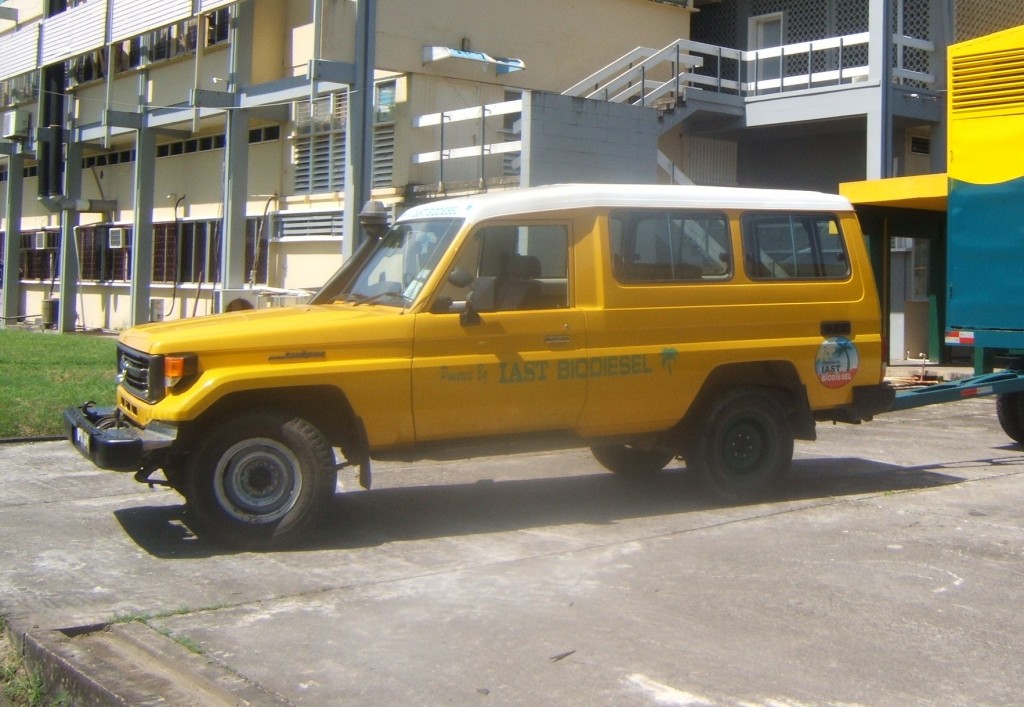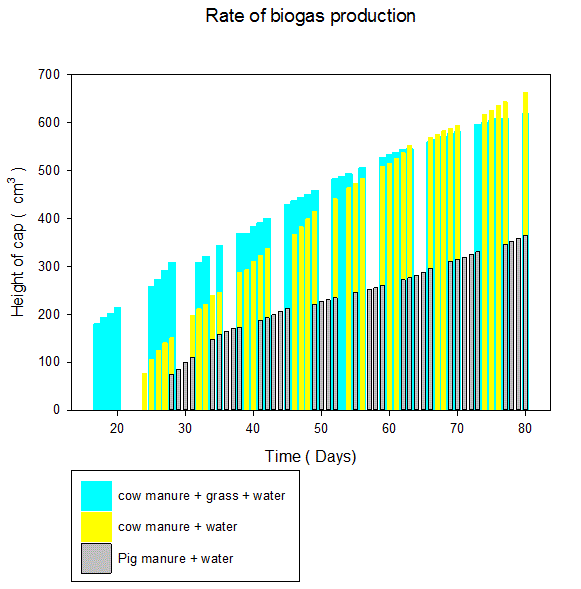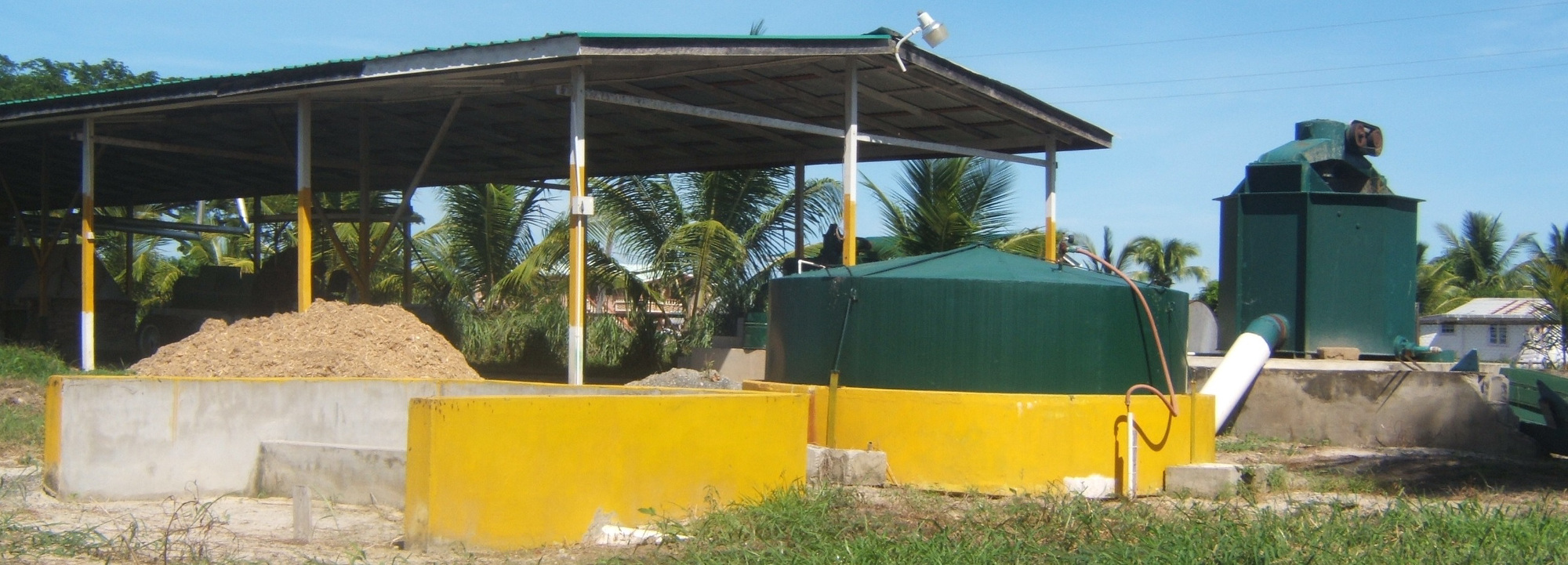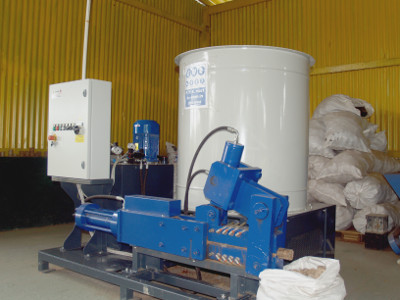Biofuel
Please click on the links above to see information and images from the projects in the BioFuel Department.
BIODIESEL TECHNOLOGY
The Institute, since 2006, began an aggressive project targeted at the production of biodiesel on a commercial basis in Guyana. The institute developed a unique pilot and industrial process to produce biodiesel from a variety of feedstock – coconut, palm, soy, canola, corn and fish oils, as well as used frying oils. Since then, the institute has maintained and utilized one of these pilot scale units to produce over 90% of its fuel needs from used frying oils from the restaurants in Georgetown and further afield. This allows the institute to utilize this fuel in all of its energy-intensive pilot scale activities and also to power 95% of its vehicles.
The project began with the acquisition of lab-scale apparatus to produce biodiesel; this was donated by IAST’s Director, Professor Narine, and by Rose Scientific Inc. (Edmonton, Alberta, Canada). Various feedstock available in Guyana (used vegetable oil from a variety of sources, and both crude and refined vegetable oils (palm, coconut, canola, soy, jatropha, etc.) was then utilized to produce B100 Biodiesel.

The feedstock was first analyzed in our laboratory to determine the various parameters such as fatty acid content, fatty acid profile, viscosity, etc. Depending on the nature of the feedstock, batch conversion processes with varying parameters such as the amount of Sodium Hydroxide, Methanol, Temperature, Reaction Time and Agitation Rate were optimized to produce B100 Biodiesel with a minimum of fatty acid content, full conversion of triglyceride content, minimum of mono- and di-acylglycerides, and optimized viscosity profiles. Staff were then trained in the production of quality biodiesel, and in analytical procedures to test both the feedstock and finished fuel for quality control parameters. Different parameters for the production of quality biodiesel were developed and documented for each type of feedstock available.
The IAST, as is known, have developed and operate a pilot plant to convert fresh and used vegetable and animal-derived oils into biodiesel. We operate the plant with oils supplied by the fast food companies in Guyana. This activity will continue as a means of revenue generation and for the provision of demonstration facilities in our activities to promote the commercialization of this technology in Guyana.
The used frying oil that would have ended up in the city’s drains is also utilized in an environmentally beneficial manner, as an additional benefit. The institute was able to secure a commercial investor to invest in this technology, and in 2006, the commercial investor acquired the National Oil Palm Company in Wauna, Region 1. The institute constructed a plant for the company, Agri-Solutions Technologies, Inc, and this company produced commercial biodiesel from palm oil produced on the estate in Wauna, and supplied the regional administration with B100 Biodiesel which was used to power the region’s electricity generators. The facility employed some 120 people. The biodiesel produced, both by the company and by AST met and exceeded all ASTM standards for B100 biodiesel. It is our understanding that in 2013 the company AST has now resorted to producing only palm oil and has halted biodiesel production due to a variety of issues with their logistics – of note however is that this is not due to technological issues with the production of biodiesel. Production of biodiesel from used frying oils will continue at the institute in 2017. Importantly, the institute’s efforts marked the first time that Biodiesel has been produced, tested, and implemented at commercial levels in Guyana – a seminal achievement.
Partnerships
To produce, test, and advertise the benefits of the new technology, the IAST partnered with a number of private companies and government institutions:

MACORP
The IAST and MACORP entered into a Memorandum of Understanding to test the biodiesel produced on heavy duty machinery distributed by the company. Furthermore, MACORP donated at the beginning of this project, some 10 barrels of methanol towards it, at an approximate cost of GUY$300, 000.

Banks DIH Ltd
Banks DIH Ltd and IAST entered into a partnership to utilize the used vegetable oil from Banks food service and food retail operations. This partnership has existed since 2006 and the IAST continues to process used oil from Banks DIH, which would have normally have to be composted into waste, into useful, high quality biodiesel.

Guyana Energy Agency
IAST and the GEA collaborate on biofuel matters, and on energy conservation and solar energy projects, both from regulatory and good practices perspectives, as well as on actual pilot projects.

MACORP
The IAST and MACORP entered into a Memorandum of Understanding to test the biodiesel produced on heavy duty machinery distributed by the company. Furthermore, MACORP donated at the beginning of this project, some 10 barrels of methanol towards it, at an approximate cost of GUY$300, 000.
BIOGAS TECHNOLOGY
The institute has designed and built a large biogas reactor that is being used to produce biogas from animal waste and antelope grass; the reactor has been used to provide fuel to light a series of street lamps, in an effort to imbue antelope grass feedstock with a
commercial value.
It was determined that a mixture of 25% Antelope grass, 25% animal waste and 50% water produces an average output of 600 cm3 of biogas per 24 hour period (this is for 1 kg of biomass) and an initial charging of the reactor lasts for approximately 60 days at this output rate. The challenge is to develop a business case for profit generation using this technology by making the energy source available to the general public. Therefore, the institute has developed a plan to install technology to scrub and bottle the biogas produced into compressed gas cylinders, and to introduce into the Guyanese marketplace demonstration biogas-powered refrigerators and air-conditioners.


BIOMASS BRIQUETTE
Guyana’s rice, cane and sawmilling industries all produce significant amounts of waste in the form of rice husks/hulls, bagasse and sawdust.
This waste material generally cannot be easily consumed as fuel due to the large surface area to volume ratio which results in high combustion rates but no significant concentration of energy.
IAST has solved the challenge of utilizing this type of waste. A hydraulic briquetting machine reduces the surface area to volume ratio by compacting the biomass to produce briquettes. These briquettes can then be consumed as fuel in households and industries.
IAST produced 1.6 tonnes of briquettes from sawdust and tested their suitability to replace the firewood used for steam production at the Enmore Sugar Factory operated by GuySuCo. It was found that an equivalent mass of briquettes produced a higher pressure and larger amount of steam for a 25% longer time period compared to firewood.

Benefits for using briquettes reflect Guyana’s Low Carbon Development Strategy to:
- Reduce dependance on fossil fuels
- Reduce environmental footprints
- Increase efficiency and utilization of biomass derived energy
IAST calculates 1 tonne of briquettes costs GY$6,169 to produce compared to GY$11,400 for 1 tonne of firewood.
INSTITUTE OF APPLIED SCIENCE AND TECHNOLOGY
UNIVERSITY OF GUYANA CAMPUS,
TURKEYEN, GREATER GEORGETOWN,
GUYANA
TELEPHONE: (592) 222-4212-5, (592)-222-4218, (592)-222-5864
FAX: (592) 222-4229
For further information kindly contact:
Mr. DEONARINE JAGDEO
Director (ag.)
RAYANN HINCKSON
Confidential Secretary
r.hinckson@iast.gov.gy
